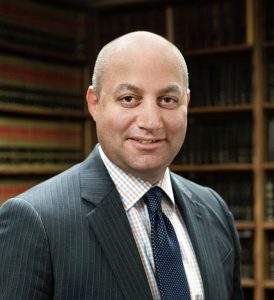At least eight people were killed after the terrorist group Al-Shabaab took over a hotel in Somalia’s capital city Mogadishu, not long after the group claimed responsibility for two car bomb bombings and gunfire in the city. According to Abdikadir Abdirahman, director and founder of Mogadishu’s Aamin ambulance services, nine injured people were brought away from the hotel earlier today.
Al-Shabaab, also known as al-Shabab, is a Somalia-based Islamist terrorist group having ties to al-Qaeda. The group launched an insurgency against Somalia’s Transitional Federal Government (TFG) in 2006.
Al-Shabaab began as a militia connected with the Islamic Courts Union (ICU), a federation of local and clan-based Islamic courts created in southern Somalia in 2004 to battle the anarchy and banditry that had plagued the region since the collapse of Mohamed Siad Barre’s government in 1991.
Also read: Mogadishu terror attack: All you need to know
From around 2004, this militia served as an armed wing of the ICU, including fighters from the defunct Somali militant Islamist group al-Itihaad al-Islamiyyah, as well as a handful of fighters who had fought for or been trained by the al-Qaeda network. The group became known as al-Shabaab, which means “the Youth,” and was directed by Aden Hashi Farah Ayro, a Somali operative who purportedly had al-Qaeda training in Afghanistan.
Al-Shabaab took a more severe ideological stance than the ICU as a whole, supporting a puritanical strain of Islam in contrast to the Sufi-influenced variety practised by many Somalis.
In early 2006, al-Shabaab soldiers fought alongside the ICU against a coalition of Mogadishu warlords that the US secretly sponsored in an effort to halt the growth of militant Islamism.
In June 2006, the ICU overcame the warlords and gained control of Mogadishu. In the same month, the ICU changed its name to the Somali Supreme Islamic Courts Council (SSICC). The victory bolstered al-Shabaab, allowing fighters to seize arsenals belonging to warlords.
Also read: Where is Mogadishu?
The SSICC’s capture of Mogadishu posed a threat to the TFG, which was then operating from Kenya and the Somali city of Baydhabo, as well as the TFG’s international sponsors, particularly the US, which believed that the SSICC would provide a safe haven for al-Qaeda.
At the end of 2006, a US-backed Ethiopian force joined forces with TFG troops to attack the SSICC, which was quickly crushed and dissolved. Al-Shabaab, on the other hand, remained intact and resumed a campaign of bombings and attacks throughout Somalia against the TFG and Ethiopian soldiers. Civilians, journalists, and international aid workers were also targeted, as was the African Union peacekeeping force (AMISOM), which the UN Security Council authorised in February 2007.
Also read: Somalia: 5 deadliest attacks by terrorist group Al-Shabaab
The death of Ayro in a US air strike in 2008 had minimal effect on the insurgency of al-Shabaab. The TFG negotiated a power-sharing deal with members of the erstwhile SSICC in October 2008, allowing moderate Islamists to join the cabinet. Al-Shabaab, which remains adamantly opposed to any compromise with the TFG, condemned the agreement, despite the fact that it established a timeline for the removal of Ethiopian forces from Somalia.
In 2009, Al-Shabaab expanded its control region by prohibiting un-Islamic behaviour and imposing punishments such as execution, stoning, and amputation on offenders. In July 2010, al-Shabaab suicide bombers carried out the group’s first significant attack outside of Somalia, killing approximately 75 people who had gathered in Kampala, Uganda, to watch a World Cup football (soccer) game.
Also read: ‘Ninja’ missile used to kill al-Qaida leader part of a scary new generation of unregulated weapons
The attack was claimed by Al-Shabaab as punishment for Ugandan forces’ participation in AMISOM. Al-Shabaab garnered more international attention for first prohibiting and then restricting humanitarian aid groups’ access to southern Somalia during a severe drought and famine in 2011.
Al-Shabaab looked to be on the defensive by mid-2011. The organization withdrew from Mogadishu in August 2011 after being worn down by frequent skirmishes with AMISOM soldiers. When several thousand Kenyan soldiers entered southern Somalia in response to a series of purported al-Shabaab bombings and kidnappings in Kenya, the group was compelled to fight on a second front.
The Kenyan military in Somalia formally joined with AMISOM in June 2012, and an AMISOM attack in October of the same year drove al-Shabaab out of Kismaayo, the group’s last urban bastion.
Also read: Ayman al-Zawahiri killing: Taliban leaders meet on how to respond to US attack
In February 2012, al-Shabaab and al-Qaeda issued a video in which they stated that al-Shabaab had formally committed allegiance to the al-Qaeda network.
On September 21, 2013, al-Shabaab carried out its bloodiest attack outside of Somalia in some years, when terrorists attacked a Nairobi shopping mall, killing at least 65 people. Kenyan police encircled the shooters in the retail centre, resulting in a multi-day siege.
Al-Shabaab struck again in Kenya on April 2, 2015, killing more than 140 people and injured dozens more in a raid on a university in Garissa.







